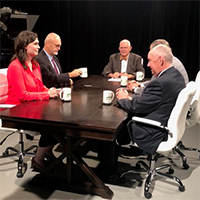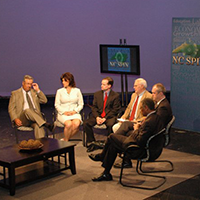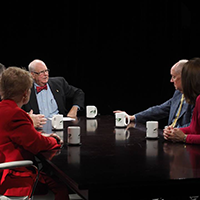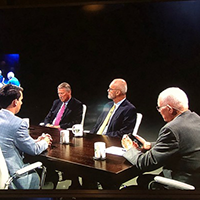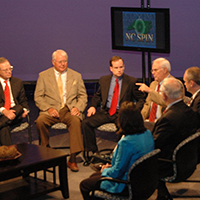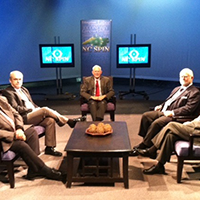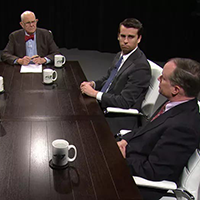What does the Fed rate cut mean?
Published September 25, 2025
Recently the Federal Reserve (the “Fed’) cut its key interest rate. This was their first rate cut in nine months. Although the reduction was modest – one quarter of one percent – it was noteworthy because it sent a signal the Fed is concerned about growth of the economy.
Before I address today’s question it’s helpful to give a short summary of what the Fed is and powers the agency has. The Fed – officially the Federal Reserve System – was established in 2013 to stabilize the nation’s growing financial sector. When periodic bad financial news prompted people to withdraw their deposits form banks, there was no backstop to avoid a nationwide financial panic. The Fed was created by Congress to oversee banks and also to serve as a lender of last resort.
The Fed is an independent agency. It is not part of the departments under the President. When there are vacancies on the Board which operates the Fed, the President has the power to nominate individuals to the Board, including the Board’s Chair, but nominees must be confirmed by the Senate. Also, the President can only remove a Board member, including the Chair, for wrongdoing, but not for policy differences.
After World War II, there was widespread worry the nation would return to the depressionary conditions that existed prior to the war. As a result, Congress amended the Fed’s charter by adding two requirements. The Fed was to use its powers to keep both the inflation rate and the employment rate low. This is referred to as the “dual mandate.”
The Fed has two unique powers to achieve the goals of the dual mandate. The first is control over the money supply. The second is control over the interest rate charged by a bank to loan to another bank, called the “federal funds rate.”
How are these two powers used? Let’s say the Fed is worried about high inflation. Inflation – which is a measure of how fast prices are rising – is caused when consumers’ desire to buy products and services – economists call this “demand” – is greater than the amount of products and services available to buy – called “supply.”
In this case, the Fed will moderate “demand,” meaning they’ll try to motivate consumers to buy less so as to cause demand and supply to be similar. One way to do this is to decrease the supply of money. A second way is to increase the Federal funds rate and expect other interest rates to also rise. Higher interest rates will reduce borrowing and hence reduce spending. This policy is called “tightening.”
Now let’s go to the other mandate – keeping a low unemployment rate. Suppose the jobless rate is rising. The Fed will try to turn this around by doing exactly the opposite of what the agency would do when the problem is high inflation. The Fed will increase the money supply and it will lower its federal funds rate. This will give consumers greater ability to spend and borrow. Doing so will motivate businesses to increase production and likely hire more workers, hence resulting in a lower unemployment rates. This policy is termed “loosening.”
There are two takeaways from this discussion of the Fed’s powers and the use of those powers. One is the Fed cannot address both mandates simultaneously with its powers. Second, how the Fed uses its powers will tell has which mandate the Fed is most concerned about.
Now let’s get back to today. Since the Fed reduced their interest rate – although the Fed said nothing about increasing the money supply - this means the Fed is focusing on their low unemployment mandate. Currently the national jobless rate is 4.3%. This rate is not horribly high. Remember during Covid the rate was 14%, and in the Great Recession of 2008-2010 the unemployment rate reached 10%. But today’s rate has trended upward from 3.4% just two years ago. Also, job growth has slowed this year, with one month showing an outright decline in jobs.
And while the Fed is likely not happy with the recent direction of the inflation rate, which after being close to 2% year-over-year earlier this year, is now closer to 3% year-over-year, the Fed can be happy their policies helped bring the rate down from over 9% year-over-year in 2022 without causing a recession. Also, although this is only my speculation, the Fed may be thinking the inflation rate will resume dropping once the “tariff war” is ended.
Who will benefit and who will lose from the Fed’s rate cut? Borrowers are winners as long as rates drop. But why wouldn’t they? Actually, many interest rates, including mortgage rates, have already been falling in anticipation of the Fed’s cut. Also, if financial firms expect the inflation rate to continue rising, that fear could prevent lower interest rates. The reason is lenders need larger repayments when they fear higher inflation reduces the value of future dollars.
Stock market investors usually benefit when interest rates fall. The stock market typically interprets lower interest rates as being good for businesses. Conversely, if the inflation rate moves higher, the stock market could go in the opposite direction – down.
Those buying interest-paying investments, like CD’s, will see lower returns if rates drop. On the other hand, those who own investments paying fixed interest rates that can be sold, will be able to sell their security for higher value.
So, there’s actually much uncertainty about the impact of the Fed’s cut. But one result is for sure. The Fed is now more worried about jobs than inflation. Are you? You decide.
Walden is a William Neal Reynolds Distinguished Professor Emeritus at North Carolina State University.

